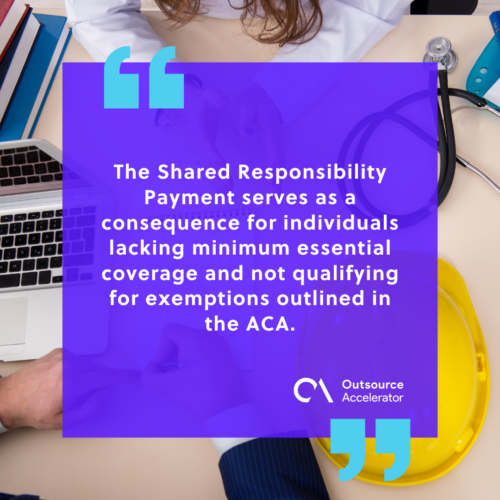What is Form 1095-B?

Navigating through various forms and documents can be daunting when tax season rolls around.
Form 1095-B is one such document that plays a crucial role in understanding and reporting health coverage.
Whether you’re an individual seeking clarity on its purpose or a business handling employee health benefits, understanding the matters regarding this form is essential.
This comprehensive guide will unravel the intricacies of Form 1095-B, its significance, the filing process, and ensuring compliance.
What is Form 1095-B used for?
Form 1095-B is a health coverage information document to report certain information to the Internal Revenue Service (IRS). It concerns individuals with minimum essential coverage as the Affordable Care Act (ACA) requires.
Issued by insurance companies, self-insured employers, or other providers of minimum essential coverage, it details the coverage and the individuals covered under it.
Form 1095-B serves multiple purposes:
- Tax filing – Individuals use this form to prove they have minimum essential coverage and avoid the individual shared responsibility payment.
- IRS reporting – It helps the IRS verify individuals’ coverage, ensuring compliance with ACA requirements.
- Health coverage verification – Employers and individuals use it to verify their health coverage months.

Form 1095-B vs. Form 1095-A vs. Form 1095-C
Form 1095-B, Form 1095-A, and Form 1095-C are distinct documents under the Affordable Care Act (ACA) used to report health coverage information but cater to different scenarios.
Form 1095-A is specifically for individuals enrolled in health coverage through the Health Insurance Marketplace, detailing information on the following:
- Premiums paid
- Subsidies received
- Coverage obtained
Form 1095-B is provided by insurance companies, self-insured employers, or other minimum essential coverage providers. It documents details about individuals covered outside the Health Insurance Marketplace.
It includes information about the covered individuals, months of coverage, and the type of coverage.
On the other hand, Form 1095-C is issued by applicable large employers (ALEs) to their full-time employees, providing information about:
- The health insurance coverage offered
- Affordability of health coverage
- Employees’ enrollment status
While all three forms serve the purpose of documenting health coverage, they cater to different aspects.
Here’s a more simplified version of this explanation for easier understanding:
- Form 1095-A: Issued to individuals who enrolled in health coverage through the Health Insurance Marketplace
- Form 1095-B: Information about minimum essential coverage outside the Health Insurance Marketplace
- Form 1095-C: Furnished by applicable large employers (ALEs) to full-time employees regarding the health insurance coverage offered
Coverage of Form 1095-B
Within the Affordable Care Act (ACA), the mandate for individual health insurance necessitates minimum essential coverage, known as the individual shared responsibility provision.
Most employer-provided health insurance plans generally meet the criteria for minimum essential coverage.
Government-sponsored programs such as Medicare and most Medicaid plans are also considered qualifying plans.
Let’s explain these two crucial parts of Form 1095-B in detail:
Shared Responsibility Payment
The Shared Responsibility Payment serves as a consequence for individuals lacking minimum essential coverage and not qualifying for exemptions outlined in the ACA.
When these individuals file their taxes, they may face this payment, which acts as a means to encourage broader participation in health insurance coverage.
This payment is calculated based on the duration of time without coverage and is intended to promote responsibility and participation in healthcare provisions.

State penalties
Beyond federal penalties, certain states maintain their mandates, necessitating residents to possess adequate health coverage.
These state-specific requirements vary and might entail penalties for those without the mandated coverage.
Form 1095-B plays a crucial role in aiding individuals to meet these state-imposed obligations by providing comprehensive documentation of their health coverage.
Individuals can align with their state’s mandates by accurately detailing their coverage through this form. This avoids penalties and ensures compliance with state regulations regarding health insurance coverage.
Step by step process to file Form 1095-B
Filing Form 1095-B involves several sequential steps:
Step 1: Collect information
In this initial step, gathering pertinent details required for the accurate completion of Form 1095-B is crucial.
This includes collating essential information such as:
- The names of individuals covered under the health insurance plan
- The individuals’ respective Social Security numbers
- Comprehensive record of the months throughout the tax year during which each individual had coverage
Ensuring the accuracy of this information is fundamental for precise reporting.
Step 2: Prepare Form 1095-B
Once all necessary data has been assembled, the next phase involves completing Form 1095-B precisely.
Careful attention must be given to input all the gathered information onto the form accurately.
Double-check entries to guarantee that all details are correctly transcribed, as inaccuracies could lead to discrepancies in reporting health coverage.
Step 3: Submit copies to individuals
After Form 1095-B has been accurately filled out, the next step involves disseminating copies of the completed form to the individuals covered by the health insurance policy.
Furnishing these copies equips covered individuals with the necessary documentation to accurately file their taxes.
Ensuring timely distribution of these forms empowers recipients to fulfill their tax obligations while accurately reporting their health coverage.
Step 4: Submit to the IRS
Submit the Form 1095-B to the Internal Revenue Service. Timely and accurate submission is crucial to facilitate the IRS’s verification processes and to fulfill ACA terms.
Step 5: Maintain records
After filing Form 1095-B with the IRS, it’s imperative to maintain records of these filed forms for at least three years, as mandated by the IRS.
These records serve as essential documentation and should be readily accessible for reference in case of inquiries, audits, or future filings.
Proper record-keeping ensures compliance with IRS regulations and facilitates a smooth process should the need for verification arise.

Ensure your health coverage with Form 1095-B
By diligently utilizing this form to report health coverage information accurately, individuals and organizations pave the way for a seamless tax season.
Form 1095-B is not just a form; it serves as a crucial link between financial responsibilities and healthcare security, offering a strong foundation for peace of mind.







 Independent
Independent




